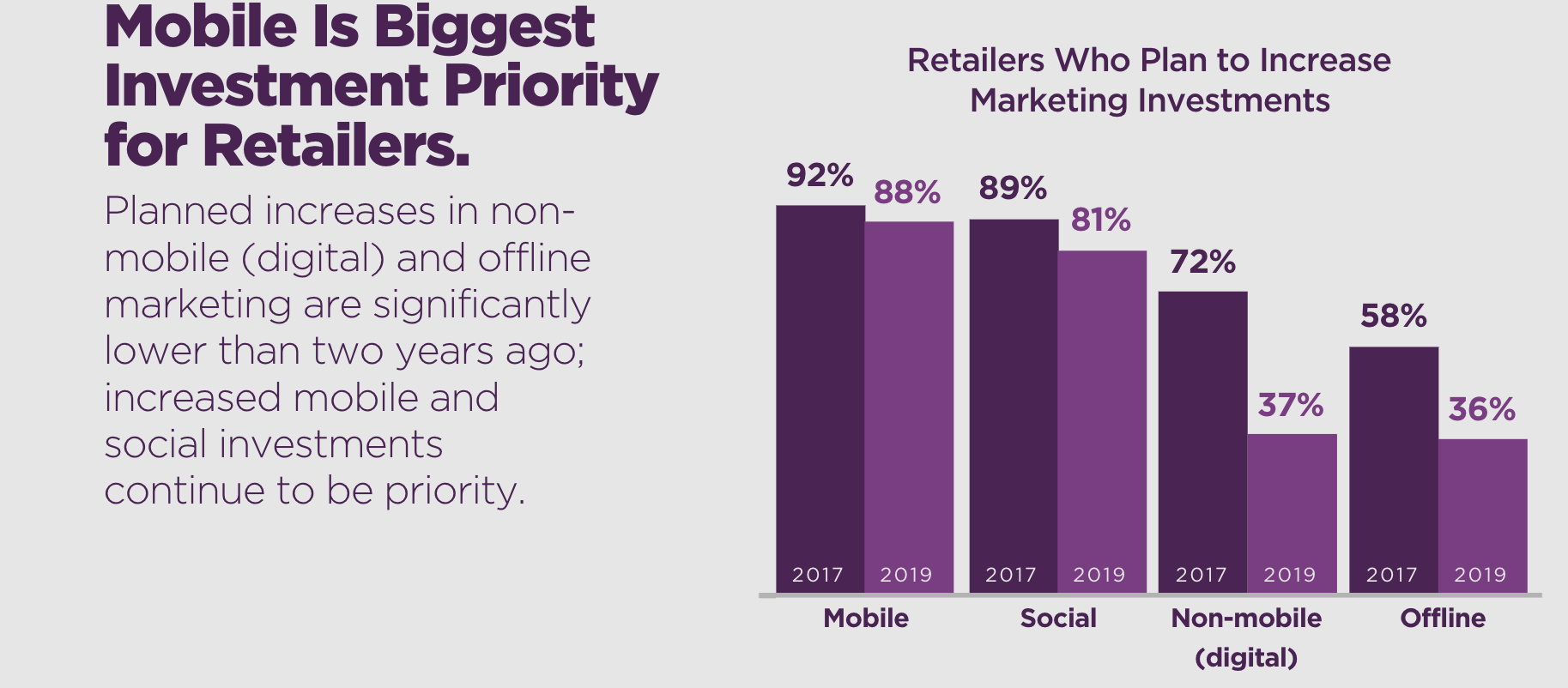
According to a study from Juniper Research almost 2.1 billion global consumers are expected to use mobile wallets for payments or money transfer in 2019 — a 30% growth year over year. While frictionless payments have been a major talking point for big-box retailers for some time, smaller businesses are incorporating different payment tools into transactions including Square, PayPal and Apple Pay.
Are you and your retail partners increasing payment options?
Already today, many shoppers happily leave their cash, cards, coupons, and tickets at home and rely solely on their phone for purchases. In fact, 60 percent of consumers believe they’ll shop completely wallet-free as early as 2025, according to the 2018 Synchrony Digital Study. Why mobile wallets?
- A faster authorization process than chip/EMV
- Flexibility and choice in payment option
- Better security features than physical cards
- The ability to transact when a customer has no physical card or cash on hand

What is a Mobile Wallet?
In general, the term “mobile wallet” (also referred to as “digital wallet,” “wallet passes” or “wallet card” or “mobile wallet passes”), describes content or information in the form of a wallet item or pass stored in the Apple Wallet or Google Pay (formerly Android Pay / Google Wallet) apps. Think of it as the digital equivalent of all the everyday things included in a physical wallet like loyalty cards, coupons, business cards, tickets, credit cards and more.
Mobile wallets are rarely forgotten because they’re stored on your consumer’s phone. How many times have you gone to a store and forgotten the coupon you were saving or the loyalty card you just signed up for? They are also very effective and efficient for a business because a wallet pass can be easily created, managed and updated, allowing a business to significantly reduce the cost of a traditional (physical) card program by 10x-25x.
Think of it like Amazon’s one-click purchase feature, made available on your other favorite sites, or like the contactless card payments you’re used to in-store.
Digital wallets are all about removing friction from the mobile buying process. Remove the barriers put up by having to enter long strings of numbers, and by tedious button clicking, and watch customers stroll right through the checkout.
Does the Use of Mobile Wallets Increase Revenue to You?
As reported in BigCommerce, "How about a 3X in mobile cart conversion for those sites which encourage payments through digital wallets."
That’s more than a pretty decent ROI for something which should be standard practice anyway, don’t you think?
Mobile wallets are also more secure than using typical credit card payments online. This is important.
A report by the Baymard Institute states that almost 20% of customers abandon their carts because of concerns over the safety of their information on mobile.
It’s understandable; over the years, we’ve been conditioned to believe that entering your card details on a phone is significantly more risky than on a desktop device. Allowing users to pay using Apple Pay, Amazon Pay or Google Wallet removes that fear, which translates into more revenue for your business.
It’s these friction points that mobile wallets are intended to overcome. If a customer has to remove a credit card from their wallet to type in the number every time they want to shop, there’s a higher possibility that during that time, they’ll decide to abandon their cart.
Mobile wallets should be part of your overall eCommerce strategy for your brand.
With just a couple of taps, a mobile wallet can help close the sale and provide a better experience for your customer.
Shopify has also upped its game to help retailers with it's "Tap & Chip Reader, Dock, and Retail Stand."
Want people to create an account before buying? Say goodbye to 35% of mobile customers — and that’s not even the biggest reason they leave.
Alternatively, providing an uninterrupted checkout experience that is conducted on a brand's own page—without adding extra clicks, sign-ins, or forms—increases the chance a shopper will convert. Brands should capitalize on technologies that not only provide an optimized checkout experience, especially on mobile but also offer consumers more ways to pay, thus leading to fewer opportunities for cart abandonment.


